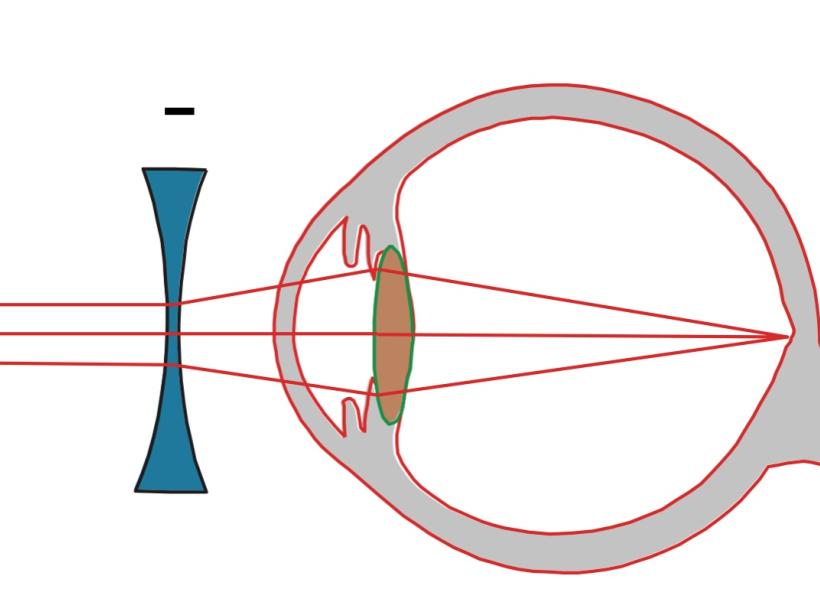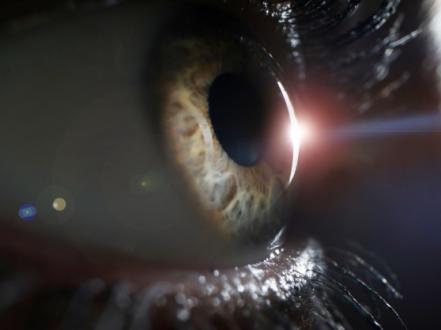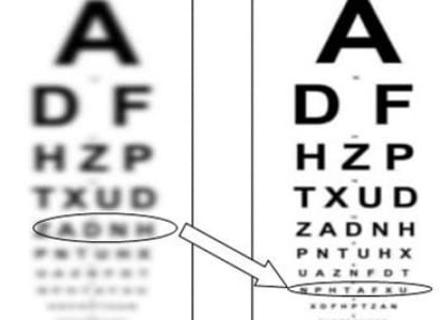Progressive myopia is any type of myopic refractive error, characterized by a consistently developing deterioration in distance vision. The definition of the disease is a feature of the structure of the optics of the eye (refractive error), in which the rays refracted by the optical system are focused in front of the retina.
Types of progressive myopia are distinguished into separate groups, the appearance of which is due to specific or nonspecific, systemic or localized of progressive myopia ICD 10:
- congenital, which has arisen with a genetic tendency to loss vision;
- false, in which refraction is disturbed by excessively tense muscles of accommodation;
- transient, which develops due to insufficient blood supply to the eye against the background of diabetes or the use of drugs;
- night, developing with an acute lack of lighting;
- complicated, accompanied by other eye pathologies.
It has 3 degrees — weak, medium and high. Progressive high myopia defined as the most difficult situation is with myopia of a high degree — with it, the refractive error is 6 or more diopters. In medicine, cases have been recorded when a decrease in vision by 10-20 diopters could occur in less than a month. The fact is this form is practically uncorrected.
What is progressive myopia?
There may be several causes why myopia progresses. Almost always, the problem is based on a genetic predisposition to myopia, multiplied by the influence of external provoking factors. The stimulating and traumatic causes of the progression of myopia are the same for childhood and adults:
- long-term focusing of the gaze on an object located at a distance of less than 35 cm from the eyes;
- insufficient or too bright illumination of the workplace, light ‘hitting’ the eyes;
- prolonged static load on vision;
- insufficient quality nutrition, which lacks vitamins of group B, C, E and biologically active substances necessary for the restoration of the eyes.
Progressive myopia causes can be provoked by hormonal changes that occur in adolescence and in people who have entered the aging stage, as well as infectious and inflammatory diseases of the eyes.
Progressive myopia symptoms
The main symptom of myopia is blurred vision. This can be seen from the outside, for example, as signs of visual impairment in a child are often noticed:
- squinting;
- brings the book as close to the eyes as possible;
- when working at a computer or watching TV, you try to bring your eyes closer to the screen.
As with any disease, if you suspect progressive myopia, you should see a doctor as soon as possible.
Progressive myopia treatment
With a weak degree of progressive myopia in children, in order to stop the pathological process, it is enough to prescribe the correct correction with glasses or lenses, properly organize the mode of work and rest, monitor the correct seating position at the desk, diversify the diet with rich vitamins and microelements products, and regularly do visual gymnastics.
In order to get rid of progressive myopia in adults once and for all, quite often people choose one of the laser vision correction procedures. With the ineffectiveness of other methods of treatment, the question of surgical intervention arises.
How to stop myopia from progressing?
Progressive myopia cure includes:
- Relieve eye strain. This is done by correcting with glasses or lenses.
- Take breaks every 30 minutes during any work in the vicinity.
- Regularly do gymnastics for the eyes, eat right.
If you notice that your vision is gradually decreasing, be sure to visit your doctor. In this case, do not rely solely on eye exercises and other supportive methods.






